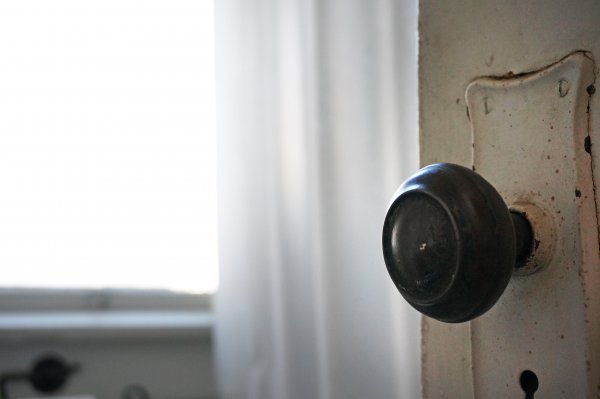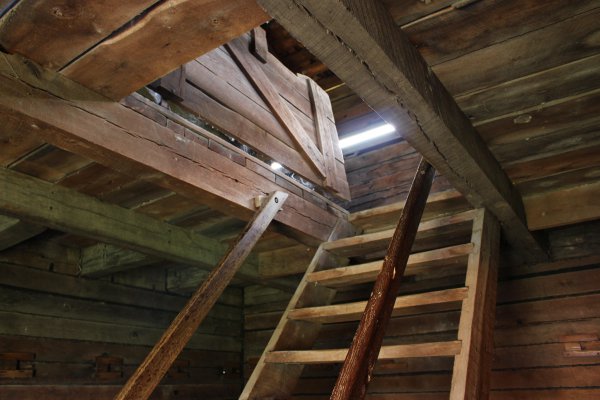Sometimes, when it comes to winterizing your home, you need to spend a little money to save a lot of money. (Free or cheap remedies can help only so much.)
You don’t have to completely break the bank, though, in your winterization efforts. Here are 13 fairly affordable ways to make a difference in conserving energy (and money) this winter:
1. Plastic window insulation
As I shared from my own experience, applying plastic window insulation to the inside of your window frames can help a lot. I’ll be upfront, though, and warn you that it’s not a fun process. Inevitably you measure or cut wrong and the double-stick tape ends up making quite a mess. But the savings will be worth the hassle. (You can find the plastic sheeting kits at many stores in the fall and winter.)
2. Insulated window coverings
If plastic window coverings just aren’t making enough of a difference, add a heavier window covering – anything from thermal curtains to quilts or blankets hung over your regular window coverings. Is this highly unattractive? Probably. Will it keep you warm? Yes.
3. Weather stripping
Buying a weatherstripping seal kit is pretty affordable and easy to install. Simply adhere it around your door openings and windows. You may have to push a little harder to make sure your doors are completely shut, but the weatherstripping will prevent a lot of drafts.
4. Silicone caulking
Purchase a tube of silicone caulking and apply it to any cracks you find in window frames and doors.
5. Door sweeps
Install door sweeps to close any gaps underneath outside doors.
6. Furnace filter
Save money on heating bills and help the air quality in your home by replacing your furnace filter according to the furnace manufacturer’s recommendation. (Typically this is once a month to once every couple months.)
7. Furnace check
Try to get your furnace professionally inspected every couple years.
8. Programmable thermostat
For around $50 to $100, you can purchase a programmable thermostat that will adjust your heating for you on a programmed schedule. You can lower temps at night or when you know you’ll be away.
9. Adding insulation
Check out the insulation in your attic. Is it pretty old? Do you even have any? As long as you can move around in your attic, add rolls of insulation – or use blow-in insulation for cramped attic spaces.
10. Protect your attic entry
Prevent heat from escaping into your attic by insulating your attic’s entry with a temporary cover – plastic, old blankets or sheets, weather stripping, or painter’s drop cloths.
11. Use a space heater with caution
Space heaters do a wonderful job of warming rooms you spend a lot of time in. Just a few words of warning, though. Your electric bill will most likely increase when you run a space heater. Also, remember to turn the space heater off when you leave the room, and keep all children and pets away from space heaters. Keep curtains and all flammable objects at least three feet away from the space heater, too – and use the heater only on a hard and level surface. (My husband and I did use a space heater one winter, but our electric bill ended up being ridiculous. I also was paranoid that we would forget to turn it off, so once we had children we stopped using it.)
12. Insulate pipes and hot water tanks
It’s easy for hot water to lose its heat when it travels through pipes in uninsulated areas. Try wrapping pipes as a way to insulate the heat. You’ll save money when your hot water tank doesn’t run quite so much. And speaking of hot water tanks … try to insulate yours with a hot water tank “jacket.”
13. Check your ductwork
It’s pretty difficult for heated air to travel efficiently when your home’s ductwork isn’t connected properly. Check the ductwork in your basement, attic, and crawlspaces. Fix gaps with metal-backed tape. If possible, cover the ducts with duct insulation. However, be careful not to insulate ducts that are located around electrical wires.
And if you have money to spend …
There are some obvious ways to conserve energy – but they’re pricey. If you’re ready to invest in winterizing efforts, consider:
- Adding storm windows.
- Replacing old windows with energy efficient ones.
- Replacing an old furnace with an energy efficient model.
How have you effectively winterized your home?
Disclosure: Purchasing products through links in this post will result in a commission for Accidentally Green. Thank you for supporting this website!
Latest posts by Hilary Kimes Bernstein (see all)
- The Day I Realized Healthy Choices Don’t Guarantee Health - July 21, 2015
- Avoid Synthetic Bug Sprays with All-Natural Repellents - July 16, 2015
- The Day I Learned I Could Cook Real Food - July 13, 2015




Thanks for the tips. You’ve given me lots to think about! Visiting from Be Not Weary today :)
Brilliant tips. I always lean towards any recommendations for insulation as it really is one of the best ways to seriously cut down on emissions and the related fuel bills.
Thanks so much, Lee!